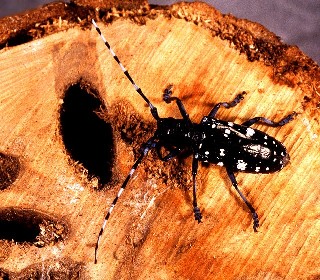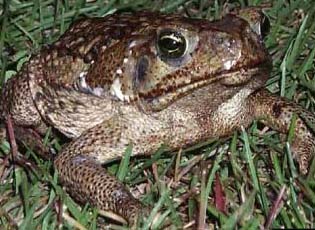- / Math & Science
- / Biology
- / Plant Kingdom
- / Non-Native Species: Land Animals
Non-Native Species: Land Animals
by Mark Hughes
- Africanized Honeybee

- Native to Africa, this honeybee was imported to Brazil in 1956 to breed with European honeybees in the hope that they would increase honey production. Africanized honeybees had the opposite impact. The natural range of the Africanized honeybee has expanded from Brazil to the United States. They can now be found in Texas and throughout the southwestern U.S. These honeybees are known for being more aggressive then the European variety.
- Asian Long-Horned Beetle
![]()
- Native to Asia, this beetle arrived accidentally in cargo. Asian long-horned beetles can be found in New York and New Jersey, and is known as a destroyer of hardwood trees.
- Asian tiger mosquito
![]()
- Native to Asia, the Asian tiger mosquito was accidentally brought to the U.S. in rubber tires imported from Japan. Rubber tires, or more specifically the water that pools inside them, is the perfect breeding ground for this mosquito.Asian tiger mosquitos are found throughout the southwestern U.S. and can transmit such viruses as Eastern Equine Encephalitis and West Nile Virus.
- Brown Tree Snake
![]()
- Native to Australia, the brown tree snake was accidentally imported to Guam via cargo. It preys on native lizards and birds, and often causes power outages when it climbs on electrical wires.
- Cactus Moth
![]()
- Native to South America, the cactus moth has been found in Florida, Georgia, South Carolina, and Alabama. How it got to the U.S. is unknown, but it is believed to have migrated on its own or was accidentally introduced by cargo. The cactus moth feeds on prickly pear cacti.
- Cane Toad
![]()
- Native to South America, the cane toad can now be found in Hawaii and Florida. It was introduced to Hawaii on purpose to help control sugar cane pests, but its introduction to Florida was accidental.
The cane toad preys on and competes with native species. It is also highly toxic to any predators, including pets.
- European Gypsy Moth
![]()
- Native to Europe, it was imported to the Northeastern U.S. for silk production. The European gypsy moth defoliates (eats the leaves) trees.
- European Starling
![]()
- Native to Europe, Europeans starlings was purposely introduced to the U.S. so that the country would have all of the birds mentioned in Shakespeare. The European starling is known for competing with native species and destroying crops.
- Formosan Subterranean Termite
![]()
- Native to China, these termites arrived accidentally on ships from the Pacific Ocean. Formosan Subterranean termites can be found throughout the U.S. southwest. They are known for competing with native species and causing structural damage to buildings.
- Giant African Snail
![]()
- Native to Africa, it arrived in Hawaii accidentally on cargo, but it was also imported as pets and for educational purposes. The snail has caused damage to native plants and crops.
- Glassy Winged Sharpshooter
![]()
- Native to the southwestern United States, the glassy winged sharpshooter has since spread accidentally through shipments to California and to Hawaii. This sharpshooter acts as a vector, or transmitter, of Pierce's disease, which is lethal to grapevines.
- Hemlock Wooly Adelgid
![]()
- Native to Asia, hemlock wooly adelgids accidentally arrived via cargo. This adelgid is considered a pest in the eastern United States because it destroys Eastern Hemlock trees, but is not a pest on the western coast.
- Pink Hibiscus Mealybug
![]()
- Native to Asia, these mealybugs arrived accidentally in cargo. The pink hibiscus mealybug can now be found in California, Florida, and Hawaii. It is known as a destroyer of crops and ornamental plants.
- Red Imported Fire Ant
![]()
- Native to South America, this ant can now be found throughout the southeastern United States. They were accidentally introduced from ships ballasts. These ants can cause painful stings to humans, pets, and livestock.
- Russian Wheat Aphid
![]()
- Native to Eurasia, these aphids can now be found in the western United States. Russian wheat aphids were accidentally introduced and are pests of wheat and barley.
- Wild Boar
![]()
- Native to Eurasia, the wild boar can now be found in the southern United States. It was originally introduced as a source of food. The wild boar causes damage to native plants and crops.
| Prev | Introduction | Next |
Related Links |
- More from Animals
















